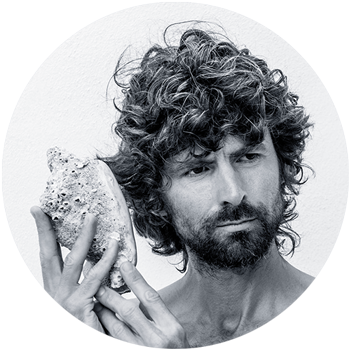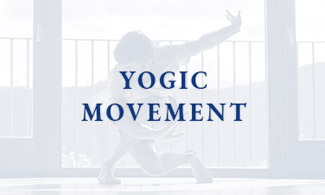
A Few Words About Ganesa Saranam
In the Bhagavad Gītā, one of the most treasured texts of the yoga tradition, yoga is described as ‘samatva’ – ‘evenness’, or the integration of all the powers of our awareness; and as ‘karmasu kauśalam’, efficiency and skilfulness in the things we do. This skilfulness and efficiency is demonstrated by the way many yoga texts encapsulate the whole teaching at the very beginning and only then go on to elaborate it.
Yoga techniques demonstrate this efficiency in the way that they encourage us, right away, to orient ourselves towards integration, and start taking practical steps to foster balance, skilfulness and efficiency.
This is one of the beauties of using song as a practice, or beginning a yoga practice with a song. Sound, being pervasive and penetrative, reaches the parts that other practices can’t always access. Further, when we sing, it can readily invite the various powers of which we are constituted into what we are doing. Singing is a physical and energetic act, but it also recruits subtle mental focus and full sensory engagement, and with the appropriate type of song, can equally summon our emotional body and intent. So starting with a song can really help us ‘do the yogic thing’: in the sense of being skilful and efficient, starting as we mean to go on, not falling into the conditioned idea that we will get ‘there’ around the next corner, or that we have to pursue a certain means for some imagined end. Rather, we invite whole system presence as best we can, here and now, recognising and embodying the reality that the means is the end. We get good at what we practice. So if we truly seek peacefulness, wholeness and integration, then peacefulness, wholeness and integration are the very qualities we need to stay attuned to through the gamut of the various practices which we may use to help rehabilitate different ‘members’ of the wonderful ‘gang’ of our being.
Bringing our gang into harmony
Following a recent program, one of the participants asked if I could send a few words about the meaning of the chant that we sung during the weekend to Gaṇeśa. The chant was:
Gaṇeśa Śaraṇaṁ Śaraṇaṁ Gaṇeśa
Oṁ Gaṁ Gaṇapataye namaḥ
There is a lot one could say about this, but here, trying to keep things relatively brief, I look at some of the key ideas that it represents for me when I sing and share it.
Gaṇeśa Śaraṇam
We take refuge in the inclusive, harmonising, reconciling power of yoga.
This is a song to the energy of Gaṇeśa, but we can also say that this is a song to the energy of yoga, symbolised by Gaṇeśa.
Gaṇeśa can be taken to mean and represent many things but essentially, it can be seen as the energy of yoga: the energy that gathers, that brings together, that unifies and reconciles things which may even seem impossible to reconcile but nonetheless does reconcile them and includes them into a cohesive whole in which all the different parts can actually get along and perhaps even enjoy the mutually nourishing and complimentary potential of working as part of a reconciled whole.
Śaraṇaṁ means refuge, shelter, protection.
So when we sing Gaṇeśa Śaraṇaṁ we are basically saying we take shelter, we find refuge, in the inclusive, reconciling, harmonising energy of yoga. Or otherwise stated, we take refuge in our innate capacity as conscious beings to invite ourselves into deeper cohesion through the harmonising power of our acknowledged, channelled conscience.
Assembling a cohesive whole
At the immediate linguistic level, the name Gaṇeśa is constituted of two words: gaṇa + īśa.
Gaṇa means group, or member of a group. It is from the verb root ‘gan’, which means ‘to count’, ‘to enumerate’; so gaṇa is a part of a whole, it’s a member, something that can be gathered, brought together, assembled, counted, enumerated, brought into a whole.
Iśa is often translated as Lord. With this sense, Gaṇeśa is the Lord of the group. In other words, Gaṇeśa is the energy that can unify the group, that can bring all the different parts or members of the group together, that can include all the constituents, recognise all the elements, and reconcile them into a cohesive whole.
Iśa is the Lord in the sense of the one that can skilfully lead all the ‘gang members’ of our being in the direction of cohesion, unity, and the type of yogic integration which will allow us to recognise all of who we really are.
Gaṇeśa then can be seen to represent the innate capacity we have as conscious, sentient beings, endowed with self-reflexive awareness and conscience, to actually bring all of ourselves into alignment and presence.
When we sing Gaṇeśa Śaraṇam, we are invoking, calling on, rousing and encouraging our innate capacity to re-member our true selves and gather all we are into the present moment so we can make it its own completion and fulfilment.
Unifying the whole field of experience
Yoga means to connect, to join, to bring into unity. Being practical, yoga recognises that the only real, sustainable unity is one that includes all the parts. I mentioned above the idea of our being constituted of many different ‘gang members’. In its practicality, yoga also recognises that each of us is something like ‘a gang’. As incarnate human beings we are constituted of many different powers. We have different organs, different powers of body, sense, mind, intellect and emotion; each of which, we might say, is like a ‘gang member’ with its own particular ‘duty’, agenda and capacities, each of which has to take care of different things and in order to do so has to work in slightly different rhythm from other ‘gang members’ in the system, even though they are really all part of one bigger gang.
This bringing the diverse and different parts of ourself into rhythm requires patient, sustained presence: this is yoga practice.
Tattva-s: the ‘ganglands’ of our being
One of the very practical models of reality that yoga uses, and in some schools build upon, is the basic Sāṅkhya model of reality.
Sāṅkhya is a system of Classical, Orthodox Indian Philosophy which most other systems of Indian Philosophy reference and/or work with/build upon/differentiate themselves from in some way. Sāṅkhya is also sometimes referred to as a sister school of Philosophy to Yoga because Yoga does use the Sāṅkhya model of reality and the evolutes of consciousness that I’m about to outline quite significantly.
There is a lot one can say about this, but for our purposes here: the Sāṅkhya model gives us a very practical map of the field of our being as conscious creatures (puruṣa/cit) living and experiencing within the realm of Nature (prakṛti/citta).
One way we can interpret or interface with the Sāṅkhya model from a yogic perspective is that as conscious beings, puruṣa-s, our essence is pure consciousness. However, the body-borne vehicle and its different powers through and with which we experience are constituted of prakṛti, the ever-changing stuff of Nature.
The Sāṅkhya model groups the constituents of our being into tattva-s, elements of ever-changing nature. The aim of yoga is to bring cohesion through the all these elements, in other words through the whole field of our being.
So what are these tattva-s?
Tat means ‘that’,
tva as a suffix means having the quality of, so a tattva is a ‘thatness’.
The term tattva then refers to aspects of ‘that’: ‘that’ being the reality of nature, and our experience as living beings.
In the basic Sāṅkhya model, there are 25 tattva-s: puruṣa, the seeing, conscious principle, and prakṛti, the seen realm of nature. Prakṛti then has 23 evolutes. Working back from gross to subtle, these are:
- the five great elements, the pañca mahābhūtāḥ: earth, water, fire, air and space;
- the five tanmātrāḥ: the realms of the senses and sense experience relating to these elements: fragrance, taste, form, touch and hearing;
- the five karmendriyāḥ: the miraculous divine powers of action that allow us to: speak and express; pick things up and put things down; move and locomote; excrete, digest, assimilate and expel; procreate and recreate;
- the five jñānendriyāḥ: the miraculous divine powers of our senses: smelling, tasting, seeing, feeling, hearing;
- and the three constituents of the antaḥ kāraṇa – the internal apparatus of our awareness: the manas which connects the indriyāh (karmendriyāḥ and jñānendriyāḥ) to the internal apparatus, the cognising and processing part of our awareness;
the ahaṁkāra, the part of awareness which relates our experiences to our idea of individuality and our sense of identity;
and the buddhi, the part of our awareness which discerns, judges, discriminates and makes decisions.
To reiterate, the idea in yoga is to bring cohesion, balance and integration through all these tattva-s, through all these powers, in the myriad ways they function and live within us.
These aspects of ourselves move at different rhythms and in different ways. They have different styles.
Perhaps you have experienced feeling torn: part of you wants to move in one direction, another part would prefer to move the opposite way, another part is demanding we go a different way entirely. It might be that one sense is pulling us one way, another sense another. It might be that our body and senses are screaming for us to move forwards, but our mind is hell-bent on holding us back, for example.
We might consider such a situation as gang warfare on the streets of the city of our being. Our task and challenge is to bring about a lasting peace, where the different gangs and gang members work together as an efficient and relaxed team, confident of each other’s support and capacities, faithful to their common aim and interest of sustainable wellbeing.
How will we do this?
The yogic recipe is to expose all the parts, all the members, to the experience of coherence, of cohesion; to invite each part, all of them, into the lived, experiential understanding that they are better off as part of a collaborative whole than eking out their own survival and trying to find true satisfaction by seeking only their own short term interests. This coherence or balanced integration is also called Samādhi: the state in which the whole being experiences togetherness, wholeness, evenness; it’s also called kaivalya, alone-ness, in the sense of all-one-ness: where no part feels lonely or left out, where all the gang members are seen, acknowledged and warmed by the hearth of centred awareness, brought out of the shadowlands by the light of centred awareness.
This is the Gaṇeśa energy, the energy that includes, unifies and by so doing, steadily trains the different parts, with all their idiosyncrasies and particularities, in the art of being part of one great whole. And as we learn, as we invite all our parts, all the members of the gang of our being to come into deeper, subtler harmony, steadily we and they learn to be part of a glorious, majestic symphony. This is Śrī Gaṇeśa, the glorious energy of yoga, of gathering, of unifying, reconciling and harmonising.
The chant continues with Oṁ Gaṁ Gaṇapataye namaḥ
So we have already sung: Gaṇeśa Śaraṇam – I take refuge in my capacity as a conscious, sentient human being to actually work with the manifold gifts of consciousness to foster greater harmony within the reality of what I experience. I take shelter in my innate capacity to bring myself into a slightly more cohesive, slightly more coherent, slightly more integrated place. And this is the practice of yoga. Wherever we are we, whatever situation we are in, we invite ourselves to be a little bit more fully present, we invite more of ourselves to be included. Extending this invitation to all parts of ourselves may require presence and courage. And so, we deepen the affirmative, encouraging power of the initial chant with Oṁ Gaṁ Gaṇapataye namaḥ.
Namaḥ means prostration, from the root ‘nam’, meaning to bow/prostrate/offer oneself to.
Gaṇapataye is the dative singular form of Gaṇapati a synonym of Gaṇeśa, so it means to Gaṇapati, to the Lord/Leader of the Group, to the one that can bring all the gang members into powerful, sustaining and harmonious cohesion.
Gaṁ is a seed mantra for this Gaṇeśa/Gaṇapati energy, affirming and accentuating the idea and intent of unification, harmonisation, inclusion and reconciliation.
Auṁ means: everything/all.
So, in other words: we offer all of ourselves, everything we are, to that innate capacity we are endowed with as conscious, sentient beings, that can bring things into greater togetherness.
When sung, because of the euphonic combination of sounds in Sanskṛt, (the way sounds alter to make them easier to pronounce) the Oṁ Gaṁ Gaṇapataye namaḥ sounds quite like ‘ong gang gaṇapataye namaḥ’
Basically, we are asking and inviting all the members of the gang that make up the field of my being, all the different gang members that inhabit the territory of my awareness: may they all work together, may they all offer themselves willingly to that part of myself that can unify, in other words may they all align with my conscience, may they all be illumined by the light of my conscience and may I have the courage, the presence, and the awareness, to allow all parts of myself to serve that deeper longing, to serve that guiding light which pulsates in the core of my being.
Or, otherwise stated, may I bring myself into ‘samatva’- evenness and integration, so I may access ‘karmasu kauśalam’, greater skilfulness and efficiency in all I do.
…
So, those are a few words about Gaṇeśa Śaraṇam. If you are interested in hearing more about the archetype of Gaṇeśa, I recommend checking out The Mythology Show on Yoga Anytime. This series includes episodes on Gaṇeśa that say a little more about the rich symbolism of this yogic archetype and what the Gaṇeśa energy represents practically. This includes stories of how Gaṇeśa got his name, and why when we take recourse to archetype and symbol in the Indian tradition, Gaṇeśa is the one that is always invoked and worshipped first. There are also series on Mother Divine and on Hanuman, also exploring the symbolism of these archetypes, what they can mean at a practical level and how we can work with them in our daily lives. If you use my name James Boag, you can get 30 days free access to yogaanytime’s now extensive programs.

James Boag | Whole Life Yoga
The yoga of the whole human being. Practical philosophy, storytelling, movement, inquiry, looking in ways that reach beyond our habitual ways of looking.
Listen to James’ unique whole life yoga perspectives on the WHOLE LIFE YOGA podcast.











